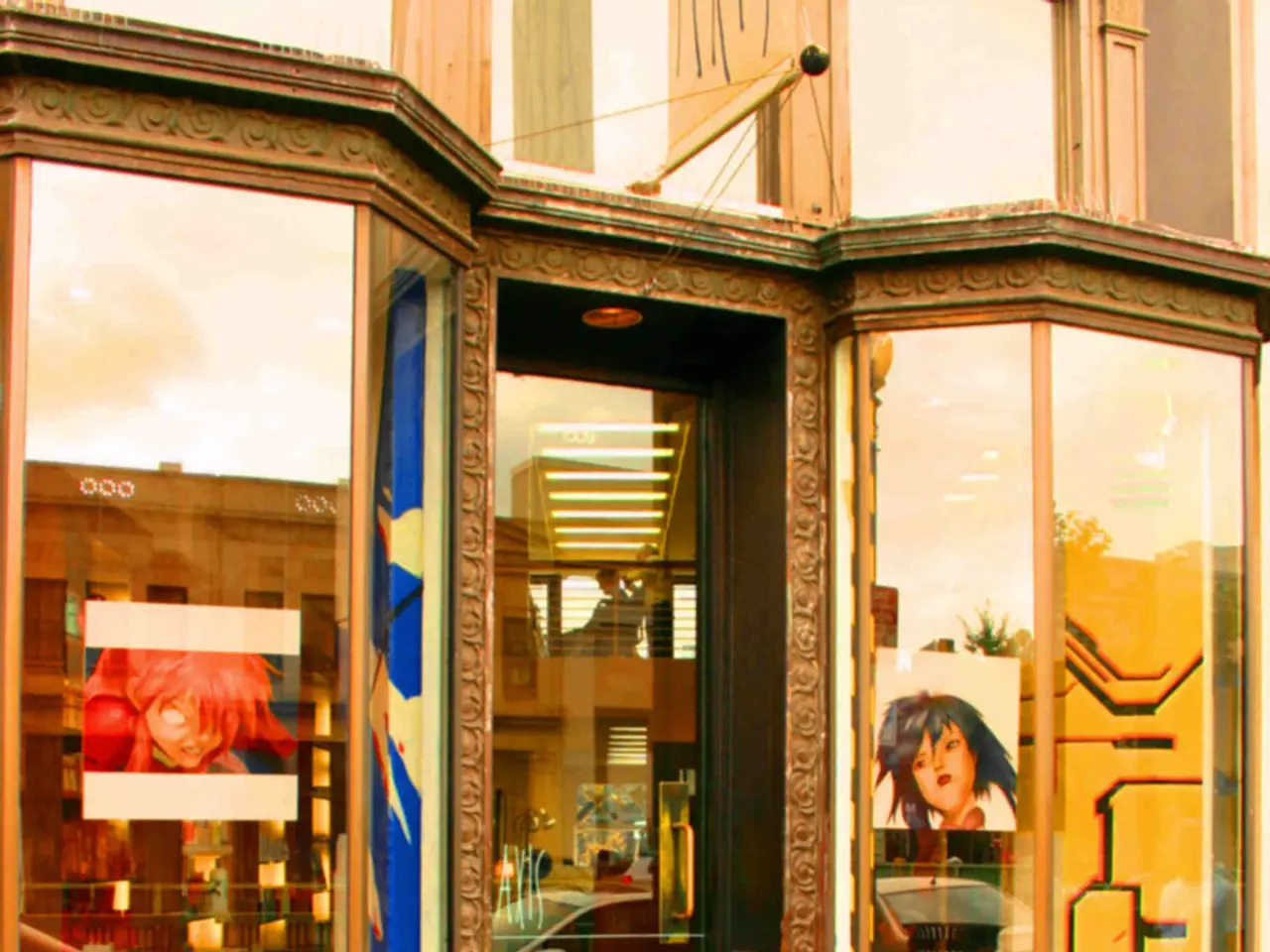Embrace a shift in focus: IKEA surpasses Apple's design appeal
In the realm of design, IKEA and Apple stand as two distinct giants, each with their unique approaches. While Apple's designs are often synonymous with premium quality and minimalist aesthetics, IKEA's philosophy leans more towards democratising design, making it accessible and affordable for a broader audience.
This democratic approach is evident in IKEA's product design, retail strategy, and even in collaborative exhibitions like the current "Magical Patterns" exhibition at Edinburgh's Dovecot Studios. The exhibition, which runs until January, features 180 textiles spanning decades of playful, democratic design from IKEA.
IKEA prioritises affordability and mass accessibility in its product design. This is demonstrated in their smart home devices and furniture that work seamlessly across ecosystems like Apple Home and Amazon Alexa, without requiring proprietary hubs. This shift towards open standards such as Matter-over-Thread connectivity promotes ease of use and interoperability for all users, not just those invested in a single ecosystem.
The retail and design strategy of IKEA is built around intuitive, functional, and widely accessible products. Their "long natural way" store layouts expose customers to complete room setups, encouraging practical design choices applicable to everyday life rather than exclusivity or luxury.
In contrast, Apple tends to create premium, closed ecosystem products focused on seamless integration within its own platform, often at higher price points which limits accessibility for a broader market.
IKEA's democratic design ethos also includes empowering users. For instance, the IKEA Place AR app enables customers to visualise and design their rooms using IKEA products easily and affordably, promoting user involvement and customisation.
The difference in philosophy between IKEA and Apple is particularly evident when comparing their products' impact on everyday life. More people have likely built their lives around an IKEA Billy bookcase than will ever own a MacBook Pro. IKEA's designs are intended to improve lives, not just impress other designers. They are sleek and premium, yes, but also joyful, colourful, and accessible.
In essence, IKEA's design approach, as showcased by the "Magical Patterns" exhibition, combines affordability, cross-platform interoperability, user empowerment via design and tech integration, and open standards rather than proprietary ecosystems. While Apple’s design approach, while innovative and premium, is more curated and exclusive, focusing on a closed ecosystem experience. This difference in philosophy underpins the democratic nature of IKEA's design approach.
- In the field of design, IKEA and Apple, two formidable titans, exhibit unique methods, with IKEA focusing on democratizing design for a broader audience.
- The democratic nature of IKEA's design philosophy is distinctly showcased in their product design, retail strategy, and collaborative exhibitions, like the "Magical Patterns" exhibition at Edinburgh's Dovecot Studios.
- IKEA prioritizes affordability and mass accessibility, demonstrated in their open standards for smart home devices and furniture, such as Matter-over-Thread connectivity, ensuring seamless functionality across various ecosystems.
- IKEA's retail and design strategy revolves around intuitive, functional, and widely accessible products, evident in their "long natural way" store layouts designed to encourage practical design choices adaptable to everyday life.
- In contrast, Apple creates premium, closed-ecosystem products with a focus on seamless integration within its own platform, often at higher price points, limiting accessibility for a broader market.
- With the IKEA Place AR app, IKEA empowers users to visualize and design their rooms easily and affordably, promoting user involvement and personalization.
- IKEA's designs, while sleek, premium, joyful, and colorful, aim to improve everyday life rather than solely impressing other designers, unlike Apple's more curated and exclusive design approach focused on a closed ecosystem experience.




